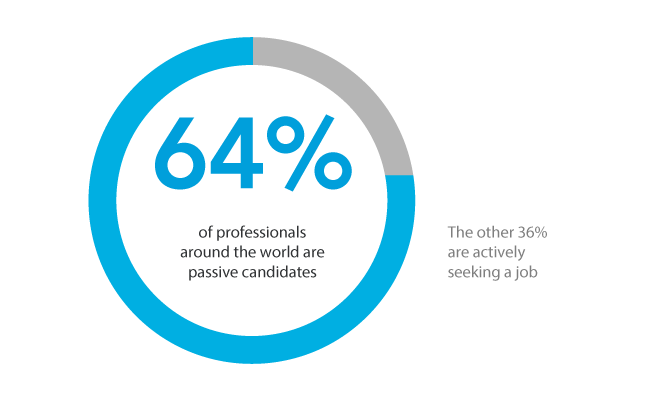Passive candidates aren’t actively seeking their next role — they’re too busy changing the worldin their current positions. Engaging with these top professionals requires a different approach.
Based on interviews with LinkedIn Talent Solutions customers who had the highest InMailresponse rates, we developed the following framework for passive talent recruiting success.
Be a real advisor to your hiring manager
1. Get on the same page quickly. Meet face-to-face with your hiring manager to understand the role's raw skills and personality requirements. Share sample LinkedIn profiles to set the baseline; agree which qualities are essential vs. nice to have. Develop a winning employee value proposition/ 'sales story' for each new role.
2. Be the strategic partner they want. Keep in touch with hiring managers even when there's no open job, to proactively uncover the needs of the business and understand the organization. Share insight on your best sources by tracking success of prior hires.
Source for success
3. Build and leverage your own hiring team. Connect with all colleagues on LinkedIn to solicit referrals and cherry-pick from their networks. Make it the responsibility of every team member to identify great candidates.
4. Find the stars beneath the radar. Look beyond initial search results. Don't disregard skeleton profiles, and ask other LinkedIn members to identify outstanding but "un-findable" colleagues with limited or no online presence
Make a great first impression
5. Immerse yourself in the candidate's world. Get smarter on the industry, using sources like LinkedIn Pulse to keep up with hot relevant topics. Research your prospect's current role and leverage mutual connections when possible.
6. Build relationships, avoid being transactional. Send fewer, more targeted InMails. Compliment profiles sincerely, and 'dangle a carrot' to lure them in rather than blasting out lengthy job descriptions. Ask to connect and continue the dialogue.
Build meaningful connections
7. Listen and adapt. Invite candidates to talk about themselves, uncover their needs/motivations, and keep detailed notes on their profiles or within LinkedIn Recruiter at every touchpoint. Reflect their input as you explain why your opportunity is right for them.
8. Develop your personal brand, online and offline. Balance social network activity with live conversation - on the phone or in person - to make a lasting impression. And regardless of the channel, be transparent, honest, and positive.
Think long-term with your relationships
9. Keep the door open. Be respectful of candidates who are either too junior, not ready to move, not ultimately hired, or not quite right for the current role. Today's up-and-coming analyst is tomorrow's top-performing hire, hiring manager or referral source.
10. Mind your manners. Be patient when waiting for replies. Rather than hounding prospects relentlessly, stay top-of-mind by using indirect channels like LinkedIn status updates to stay visible and showcase your knowledge. Always reply to candidates, and never waste their time.
For a closer look at what passive candidates really want, check out Global Talent Trends 2016.
